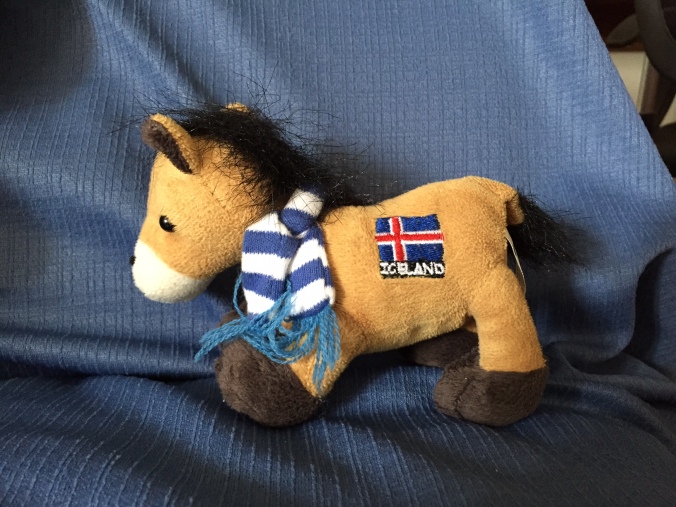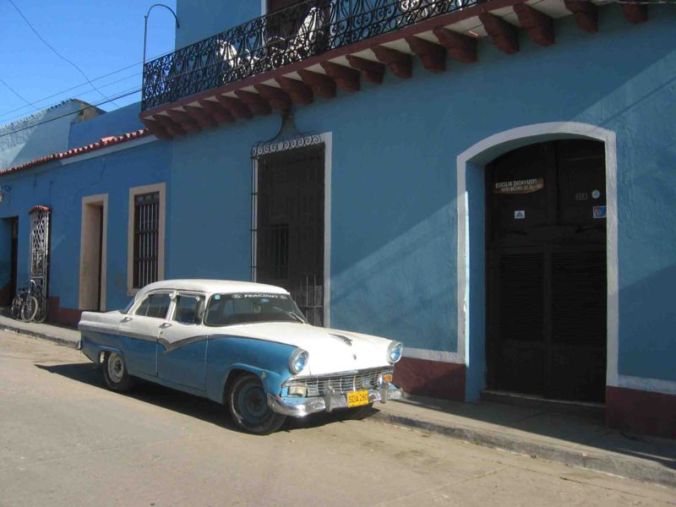We’re back in snowy, icy New York City following a wonderful week in Costa Rica. Here’s my report on our adventure.
After flying into the airport in Liberia, near the Pacific Coast, we picked up our rental car at Vamos, a smaller rental car chain that got good reviews. My daughter was really excited by the fact that there was a man riding a horse in the parking lot. It turned out that he was the owner, and he was preparing for the Fiestas Civicas in Liberia later that week. After finishing up with the paperwork and loading up the car, we set off for our accommodations for the week in Playa Hermosa, Guanacaste.
 My husband, three-year-old daughter, father, and I stayed in a lovely villa just a short drive from the town’s beach. The vacation house, which cost about $200 per night, had three bedrooms, a living room, two bathrooms, a kitchen, and a little infinity pool. Wireless Internet access made it easy to stay connected, and there was a safe for valuables. It also had a gorgeous view of the mountains and ocean.
My husband, three-year-old daughter, father, and I stayed in a lovely villa just a short drive from the town’s beach. The vacation house, which cost about $200 per night, had three bedrooms, a living room, two bathrooms, a kitchen, and a little infinity pool. Wireless Internet access made it easy to stay connected, and there was a safe for valuables. It also had a gorgeous view of the mountains and ocean.

The villa was part of a community called Hermosa Heights. We could walk down the hill to a big swimming pool with two slightly scary water slides. One of the residents of the complex told me that, the previous week, someone went down the taller one headfirst and ended up needing more than 20 stitches! In other words, you might want to use some caution on the water slides. The community also had mini golf (there was a small fee, so we didn’t play), and a little playground that would be considered dangerous by current American standards but looked like it would be fun for older kids.
 Since we had the kitchen at the villa, we went shopping a few times at the local stores and cooked, but we also went out to eat. Our favorite spot was “La Casita del Marisco,” right on the beach in Playa Hermosa, where I had a wonderful grilled fish fillet. Annika loved her “fish fingers,” and my husband really enjoyed the arroz con mariscos.
Since we had the kitchen at the villa, we went shopping a few times at the local stores and cooked, but we also went out to eat. Our favorite spot was “La Casita del Marisco,” right on the beach in Playa Hermosa, where I had a wonderful grilled fish fillet. Annika loved her “fish fingers,” and my husband really enjoyed the arroz con mariscos.
Among the highlights of our week in Costa Rica was a trip to the Africa Safari Adventure Park, described as “a nature reserve as well as an adventure park, with over 250 acres of land for relaxing and enjoying.” On the safari tour, we got onto a big truck that took us into the park’s “Savannah.” There we saw a variety of wildlife including ostriches, zebras, and giraffes. We even had a chance to feed the animals carrots, which you can purchase for $1 per bag at the shop ahead of time. If you choose to go to the adventure park, which is just outside of the city of Liberia, be aware that there is construction on the Pan-American Highway, and the roads were rough in spots. Also, it is hot in Guancaste, so bring lots of water.
 Another amazing tour that we took was a river rafting trip arranged through Laura Paniagua, who worked for Milagros Rentals, the management company for the villa. After getting up at the crack of dawn and driving to the Corobicí river near Cañas (which took about an hour and 45 minutes from Playa Hermosa), we were loaded into a van to go to the Tenorio River.There we climbed down a hill, where we climbed into a blue rubber raft.
Another amazing tour that we took was a river rafting trip arranged through Laura Paniagua, who worked for Milagros Rentals, the management company for the villa. After getting up at the crack of dawn and driving to the Corobicí river near Cañas (which took about an hour and 45 minutes from Playa Hermosa), we were loaded into a van to go to the Tenorio River.There we climbed down a hill, where we climbed into a blue rubber raft.
 The boat ride, which included Class I and Class II rapids, was gentle enough for a three-year-old and my dad. The guide told us that it was appropriate for almost all ages, and they have even (very carefully) put wheelchairs into the rafts. During the “float,” we saw monkeys, crocodiles, iguanas, bats, and a variety of birds. Afterward, we had a pleasant lunch at Rincon Corobicí restaurant, which had nice views of the river.
The boat ride, which included Class I and Class II rapids, was gentle enough for a three-year-old and my dad. The guide told us that it was appropriate for almost all ages, and they have even (very carefully) put wheelchairs into the rafts. During the “float,” we saw monkeys, crocodiles, iguanas, bats, and a variety of birds. Afterward, we had a pleasant lunch at Rincon Corobicí restaurant, which had nice views of the river.
 In addition to visiting the beach at Playa Hermosa, we also visited nearby Playa Ocotol, a black-sand beach that was very quiet and had calm waters. On the way back to the villa, we stopped in busy Playas del Coco for a pizza lunch at a spot called Pizza Mafia and bought a few groceries. Finally, we spent a day seeing the sites in Liberia, but there wasn’t much going on. Unfortunately, we missed the events around the Fiestas Civicas, which were kicking off around the time we left Costa Rica.
In addition to visiting the beach at Playa Hermosa, we also visited nearby Playa Ocotol, a black-sand beach that was very quiet and had calm waters. On the way back to the villa, we stopped in busy Playas del Coco for a pizza lunch at a spot called Pizza Mafia and bought a few groceries. Finally, we spent a day seeing the sites in Liberia, but there wasn’t much going on. Unfortunately, we missed the events around the Fiestas Civicas, which were kicking off around the time we left Costa Rica.
We’d love to return to Costa Rica in the future, perhaps to explore other parts of this beautiful country.
Other tips:
There is a great German bakery called Cafe Europa between Playa Hermosa and Liberia. Stop there on the way to the airport for goodies.
Wear insect repellant when you’re outdoors. There were mosquitoes, even though it was the dry season. Unfortunately we all got bites, despite our precautions.
It is HOT in Guanacaste (every day, it was in the 90s and sunny), so bring lots of sunscreen and reapply it frequently.
Get a GPS with your rental car. We found it really helpful, especially at night and when dealing with the highway construction area.
You can buy bags of Costa Rican coffee at the grocery stores for just a few dollars, and they make excellent souvenirs.
Bring cash in either U.S. dollars or colones for your exit tax. If you put it on a credit card, it will be treated like a cash advance, and there will be a huge fee!
If you have a water bottle with you, the nice folks at the Quiznos at the airport will fill it with tap water for you. The cafe in the Britt store sells cups milk (about $2) for kids and expensive coffee drinks for adults.
A couple more photos from our fabulous trip:















